 YouTube is the second most popular search engine, behind its owner, Google. This means that YouTube, the online video service, is also a powerful search engine. It is nothing new and has been around for years. So, why do so many managed IT service providers overlook YouTube as a critical part of their overall MSP marketing strategy?
YouTube is the second most popular search engine, behind its owner, Google. This means that YouTube, the online video service, is also a powerful search engine. It is nothing new and has been around for years. So, why do so many managed IT service providers overlook YouTube as a critical part of their overall MSP marketing strategy?
Not only are your future clients searching on Google for a managed IT services provider, but they are also using YouTube to find information and educational material before they decide on which MSP to call. For example, when searching for a managed IT services providers you see the following results: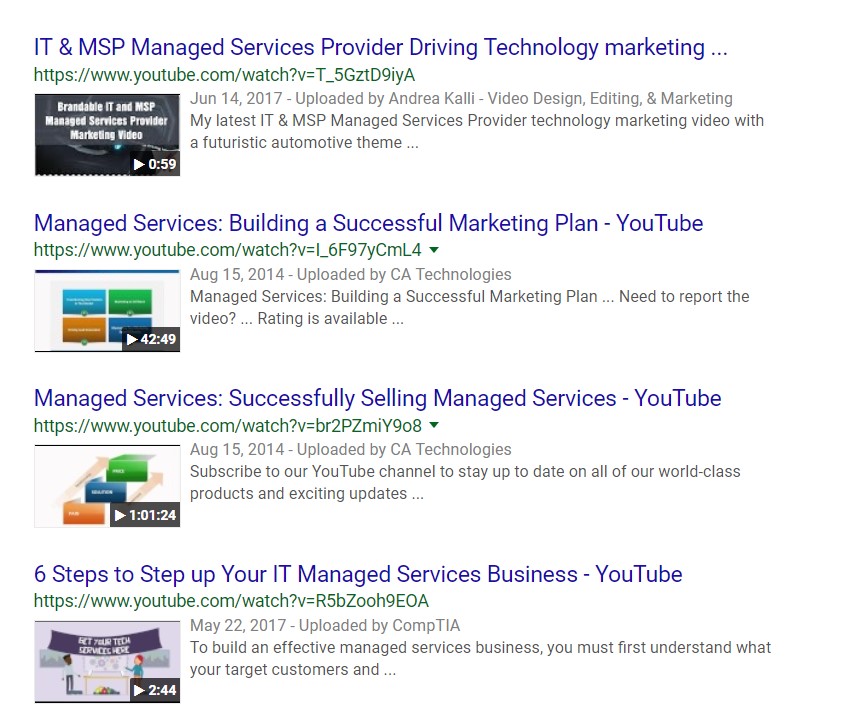
Forget about all of the YouTube technical SEO
Ruan Marinho, the owner of Develomark, a Connecticut-based SEO & Digital Marketing Agency, shares a recent training video that explains why producing massive amounts of content is the key.
Many MSPs stress over the technical SEO stuff, which spills over to YouTube. They focus on XML sitemaps, meta tags and descriptions, and other technical SEO items. According to Ruan, it’s really about the chase and producing lots and lots of content. I second Ruan’s claim that the key is to produce lots of lots of quality content. This is the biggest challenge MSPs have – producing lots and lots of content.
Proven metrics back up what Ruan and I are saying. On the Ulistic Blog, we focus on producing between 2 and 3 videos each week. We post them to our YouTube channel, produce long-form content on our blog, and then embed the video. The take away here is that you should constantly create large amounts of unique content and post it on your YouTube channel, as well as your website.
Don’t stress
Rome wasn’t built overnight (I think that’s how the saying goes). Neither will your followers and likes. Don’t succumb to the same beliefs and behavior of your peers. Many MSPs do something for a few weeks and then say, “Screw it, that didn’t work. That MSP marketing consultant has no idea what’s he’s talking about.”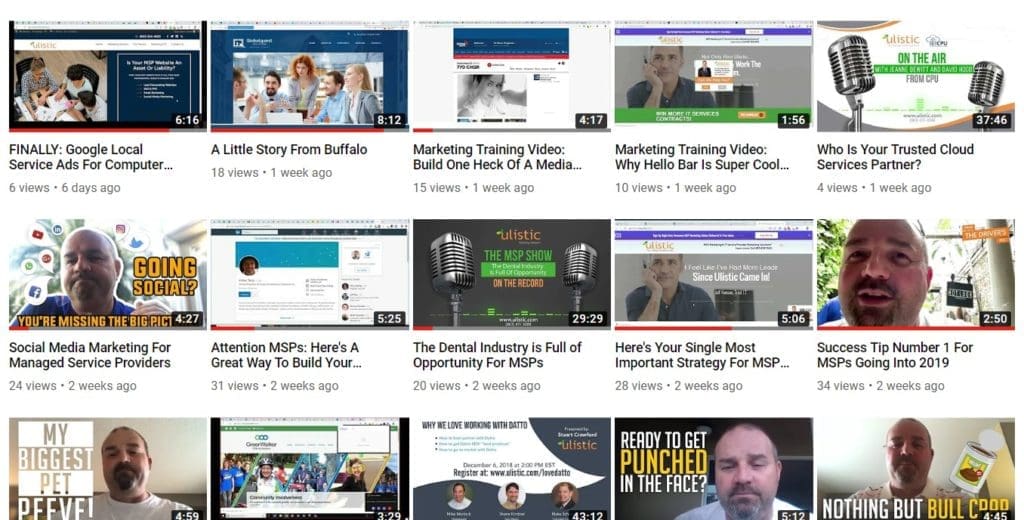
Building a follower base on YouTube takes time and effort. According to MSP YouTube sensation Curtis Hyde, from Colorado Springs IT company Colorado Computer Support, “I started getting results (leads) after about 18 months of releasing a video every week.”
The truth is many MSPs would have thrown in the towel long before that. Some have even tried 3 or 4 different marketing tactics with the same results – ZERO. Don’t stress. Instead, focus on your end goal of building your brand in the digital space and continue to produce high-quality content.
Get focused
What type of content matters? That depends on what matters to your audience. If you’re a medical IT services firm like New England’s GDS, you want your content to be entirely focused on the medical field and how technology can help doctors, dentists, orthopedic surgeons, practice managers, and anyone else in the medical business.
Avoid the common mistake of recycling the same old stuff all the other MSPs are sharing. I’m not downplaying the importance of how important these services are. However, your competitors are all playing the same hand, and if you follow suit, you won’t get the results you’re looking for. Instead, talk about things like cybersecurity and how it impacts the average medical office. Share how important it is for that medical device company to have the right backup and disaster recovery plan.
The nice thing about video is you can customize it for all your verticals. You should create many videos around the same topic and customize them for each unique audience.
Examples of YouTube video content
Aaron Fox, with Buffalo Computer Help in Buffalo, New York, was in a pinch one day. He had just five minutes to come up with an idea for his weekly video. Aaron routinely sends out a “shock and awe package” with every new prospect that comes into Buffalo Computer Help. He looked into his package and found his “17 Steps to selecting an IT company in Buffalo” flyer and created a weekly series where he shares a different tip every week.
The last time I caught up with Aaron, he told me that this video strategy and the BCH blog, that gets emailed out to his prospect base every Tuesday, combine to bring him between two and four quality leads each week. Check out the BCH YouTube channel here.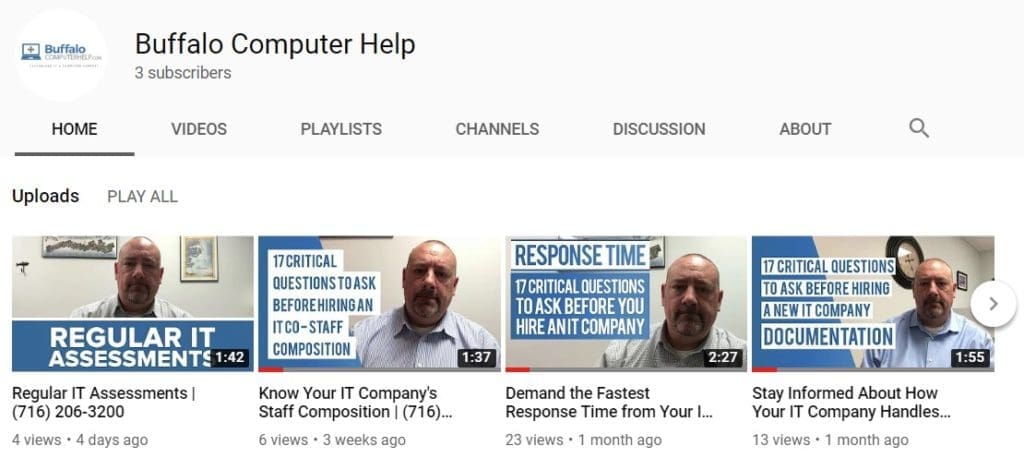 Curtis Hyde does a weekly Tuesday Tech Tip article on a different subject geared towards the general population. One thing you’ll notice about Curtis’s videos if you check them out on the Colorado Computer Support YouTube channel is that they’re simple. They aren’t overly technical, and they’re easy to produce and edit.
Curtis Hyde does a weekly Tuesday Tech Tip article on a different subject geared towards the general population. One thing you’ll notice about Curtis’s videos if you check them out on the Colorado Computer Support YouTube channel is that they’re simple. They aren’t overly technical, and they’re easy to produce and edit.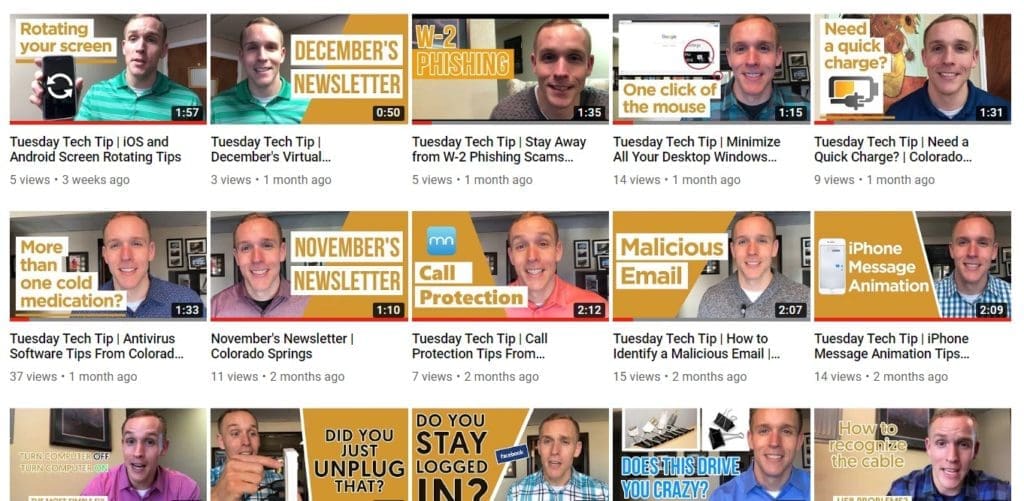
More examples of quality content
Interview your clients. I’m not talking about putting them on camera and having them give a testimonial, although these are important as well. Sit down with them and have a 10 to 15-minute discussion about their business, what they do, and how they help others. What’s the benefit to you? Well, you’re the producer and the interviewer, it goes on both your blog and YouTube channel, and your client or partner will share it with others.
Another glowing example of great content is to produce a panel of experts in a webinar format. Invite people to the live show, but also record and share it with others. Once again, those that are part of the panel may share it with their audiences. Invite three of your attorney clients to a round table on cyber liability, or have a panel with lawyers, insurance reps, and technology professionals to talk about the same subject. Record it, share it on YouTube, write content on what was covered, and share it on social media. Google will index it on its own.
Types of content to avoid
Every MSP under the sun has some sort of explainer video on managed IT services. If this includes you, stop that right now. Replace these with videos of how you, your team, and your clients deliver real value. This will immediately separate you from everyone else who is doing the exact same thing.
I’ll probably upset one or two readers here with this statement but resist the temptation to get overly geeky. Unless your target audience is an internal IT organization, avoid going over the top on the technical jargon. Like I mentioned earlier, produce high-quality content that your audience will appreciate, and customize it for each audience (if you have multiple verticals).
Before you start, do your research
I mentioned earlier in this article that YouTube is a search engine. Google indexes YouTube videos, so your goal is to get people to find your content when they go searching online for whatever they need. That’s why it is so important to do your research.
After all, Google is about providing the correct results for what people search for. In the SEO world, we call this “search intent.” Always begin with search intent in mind – what are people looking for, what’s trending (Google Trends), and what the best keywords are to use.
Regarding keywords, I recommend ahrefs.com. This is the best tool out there. But you don’t need that, just look at the long tail searches when you type in a Google search. This will help you figure out what the topic of your video should be, what words to use in your video, and what needs to be written in your video description.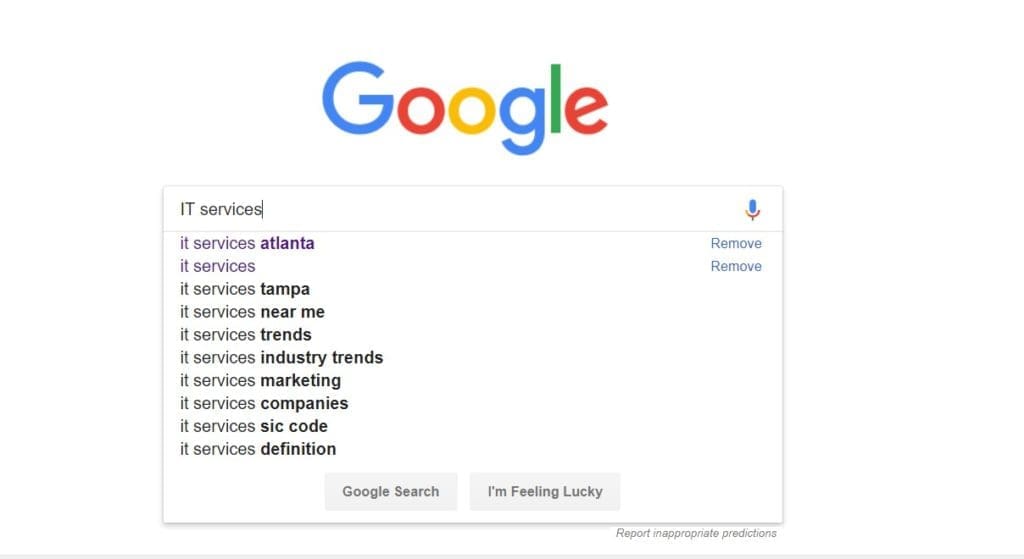
Are you ready to record?
Many managed service providers think they need to go all out with expensive lighting, cameras and other expensive gear. Trust me, I’ve been there, and all my expensive gear now sits in the corner of my office.
Curtis Hyde and Aaron Fox just use their smartphones to record their weekly videos. You can get a good, inexpensive microphone from Amazon for $20. Just make sure you have the right lighting and sound. You’ll want to do some post-production and effects. Hire an MSP marketing company or someone off Fiverr to do this for you.
Don’t be a robot reading from a teleprompter. You shouldn’t worry because stuttering, making mistakes, and “ums” and “ahs” are natural. People will get a feeling of authenticity and that it’s really you just speaking from the heart on a subject you’re passionate about.
How long should my videos be?
Excellent question and there’s no right answer. Some experts say no more than 60 seconds, others claim 90 seconds, and some say three minutes.
Here’s my answer: If your content is great and engaging and meets high-quality standards (aka, not boring and full of junk), then make them as long or as short as they need to be. People will watch 60- minute videos, glued to their screen if the content is good, but they’ll check out in 60 seconds if the content isn’t engaging enough.
What do you need?
Like I mentioned in the previous section, a smartphone with a good, inexpensive microphone is enough to get you started. I would also recommend a sturdy selfie stick to make sure your thumb doesn’t get in the way.
When you get a bit better and truly want to take your video production to the next level, I recommend checking out what D-Rock uses. D-Rock is Gary Vaynerchuk’s video guy. He has a great list of quality gear. I believe he may even have it bundled. When you get to that level, then you may want to hire that video person who’s only job is to make video content for your MSP.
Where to share?
Your YouTube videos shouldn’t just be limited to YouTube. They can be used everywhere! Post your video content on your Facebook page.
How about your blog? Take your video, have a professional writer create an article about the video. Not just a transcription, but an in-depth article on what was covered in the article and post it on your blog or website.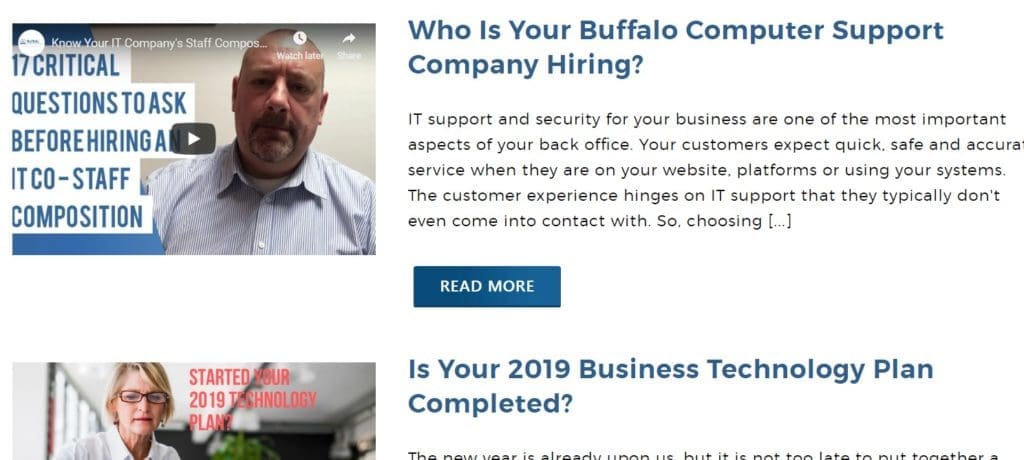
How to get started with YouTube marketing?
The opportunities are endless for managed service providers to use YouTube as an effective marketing tool. This guide just scratches the surface and is meant to be that, a starting guide. Need more information? Reach out to me by dropping an email to info@ulistic.com or visit https://www.ulistic.com to learn more.
Photo: Alexey Boldin / Shutterstock
